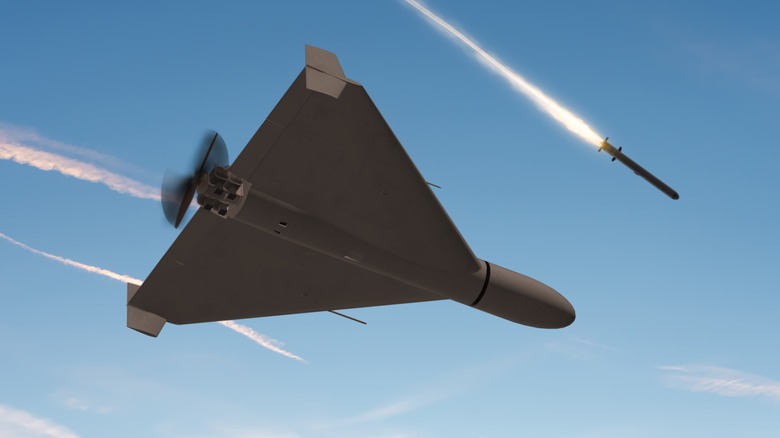This High-Energy Apollo Laser Can Take Down 200 Drones
Modern warfare is associated with military drones. They are useful for scouting areas on reconnaissance missions and are used in attack operations, carrying their own weapons on board. They work solo or in tandem with hundreds of other drones, guided by skilled pilots and navigational programs to accomplish their tasks. Now, countering them may have a powerful new tool. A new innovation from company Electro Optic Systems (EOS) is ready to change the military drone landscape. The anti-drone laser weapon is referred to as Apollo, like the Greek god of the sun.
In this age of technological warfare, the potential impact of this tool is clear when you look at recent conflicts, like how Russia has become increasingly dangerous during its war on Ukraine, which began in 2022. Though things like Russia's anti-satellite laser weapons are worrying, it's the country's drones that are making the most violent impact. Russia launches its drones for regular attacks. They have heavy warheads, large blast radiuses, and fast flying speeds. In response to this, Ukraine and other countries are developing their own technology to counter that.
EOS has nearly 40 years of experience building remote weapon systems and has earned multiple awards for its counter-drone and optical tracking technologies. With Apollo, the company aims to provide modern militaries with a cutting-edge solution to the growing drone threat.
The technology behind the Apollo laser
EOS has developed a 100 kW-class High Energy Laser Weapon, shortened to HELW. In early September 2025, they gave this weapon its name: Apollo. It is planned to be utilized by Team Defense Australia for public showcase purposes. This weapon was designed with one critical mission focus: To fight drones in today's technology-based modern warfare.
Apollo is certainly up to the task of stopping drone attacks, even Russia's advanced ones. It can disrupt drone sensors, has a 360-degree range capable of covering both horizontal and vertical attacks, and can even be mounted on a vehicle to work in tandem with soldiers. By using an external power source, it has unlimited shots, but even without this power, it still has 200 shots at its disposal, so it may be able to even outlast solar-powered drones that could fly forever. All told, while Apollo can work fine independently, it is also adaptable enough to be part of integrated military efforts.
The EOS Group CEO, Dr. Andreas Schwer, sees Apollo as something that can be utilized worldwide. In a statement on the EOS website, he said, "There is strong international interest in high energy laser weapons, and it is increasingly clear they will play a central role in counter-drone defence ... Being ITAR-free and fully controlled by EOS, Apollo is ready for partners to adopt, localise and sustain as their own."
What the future looks like for the Apollo laser
NATO is moving forward with the Apollo laser to counter Russian drone threats, as the ongoing war in Ukraine and the conflict in Gaza have accelerated demand for air defense solutions; Moscow has even launched hundreds of drones across Ukraine and even into Polish airspace. Countries including Russia, China, the U.K., Germany, and the United States are also developing their own laser-based air defense systems in response to the growing threat.
As for Apollo, the Australian-made system is set to be delivered to an undisclosed NATO country within the next two years, and its abilities when put up against real threats likely won't be anything to scoff at. Apollo has a 1.86 mile range – about equivalent to running around a football field 10 times – within which a drone will be in laser destroying distance. For reference, Russian military drones can fly over 200 mph, so 1.86 miles of distance may not seem like a lot. However, Apollo does boast being able to disable an enemy drone's optical sensors as far as 9 miles away, giving it the advantage.
From this, it is also interesting to think about what future warfare might look like. Will it be all laser weapons taking attacking drones out of the sky? Will strategy be guided by AI systems? China's first AI military commander would likely argue that to be the case. Whether or not one direction or another is a good thing leaves plenty of room for debate. For now, the Apollo laser offers a promising defense tactic against the ever-improving technology of war drones.


